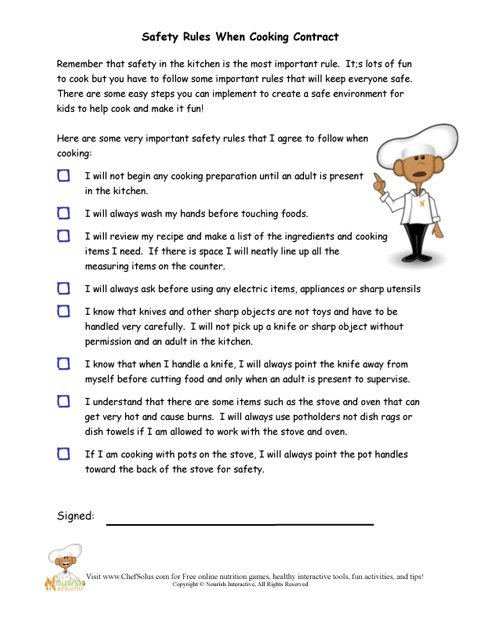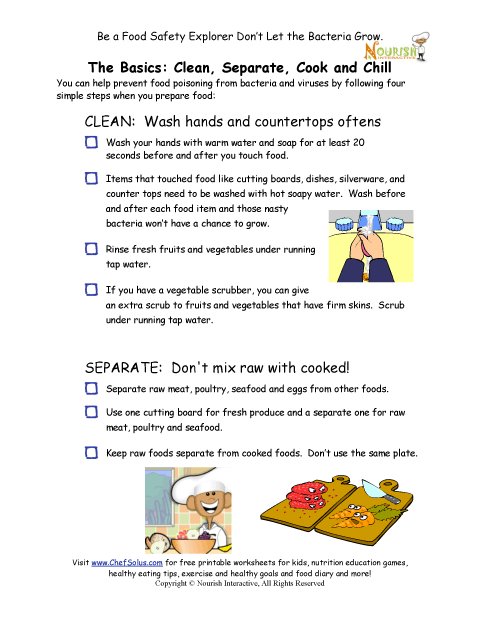So you want to learn how to cook? You are about to get started on a fun journey to prepare to help make your own food!
Congratulations! There are so many things to learn before you can prepare an entire meal on your own, and many of them aren't just about actually cooking! Over the next few months, you will learn about being safe in the kitchen, about food groups, calories, food labels, shopping for food, and balanced meals. You'll learn different words used in recipes and the tools you need to prepare them.
Today, before you can even start cooking, it is important that you know how to be safe in the kitchen, and how to handle food in a safe way. The first thing we are going to do is read together and sign the "Safety Rules When Cooking Contract." A contract is something you agree-- along with someone else-- to always remember to do. This is on page 1 in your workbook.

Of course you know that it can be dangerous to handle a sharp knife, but did you also know that it is dangerous to leave meat sitting out on the counter all day? Bacteria and other germs can grow on foods, especially meat, seafood (that's fish), eggs, poultry (that's what comes from a chicken), and fresh cut-up vegetables or fruits. These bacteria could give you food poisoning-- a really bad tummy ache! So in the cooking world, there is a rule called "Clean, Separate, Cook & Chill." These four words can help you remember how to handle food properly so you don't get sick!
First, watch this video to learn more about what I'm talking about.
Now you are going to get a chance to actually make something in the kitchen. We are going to do two things. The first one is learn how to hard-boil an egg. Eggs are one of those foods we learned about that can carry bacteria if you don't store them properly. When they are raw (not cooked) in the carton, you always keep them in the fridge! And they only last about 4 weeks before they are bad. When they are hard-boiled, they only last a week in the refrigerator. Hard-boiled eggs are good to eat plain, to make into deviled eggs, or to use in salads or sandwiches. Here is a little video about how to boil an egg.
The other thing were are going to make is Muddy Buddies. You won't actually get to "cook" these, but you will get to use the microwave and mix things together. And you will get to eat them.
For your homework, do the Food Safety Word Challenge on page 4 in your workbook to test what you learned about today.
Now go have fun in the kitchen!
Go to: Lesson 2

No comments:
Post a Comment